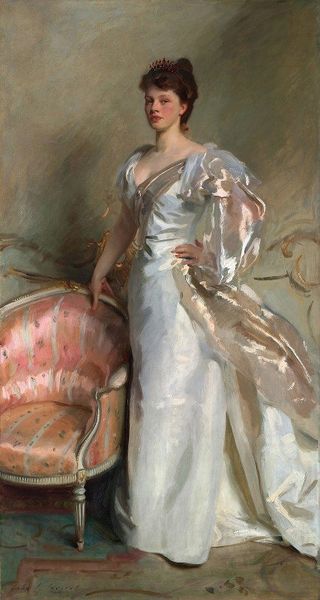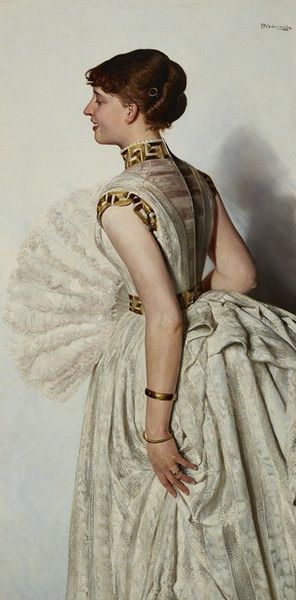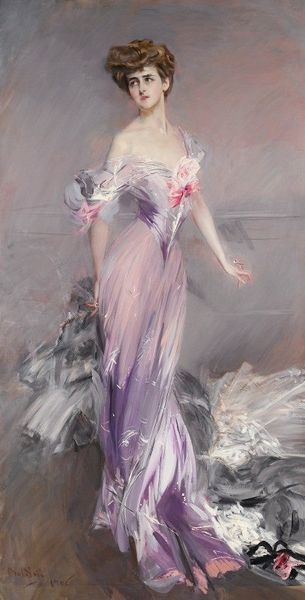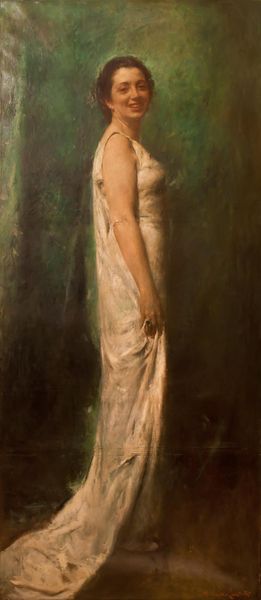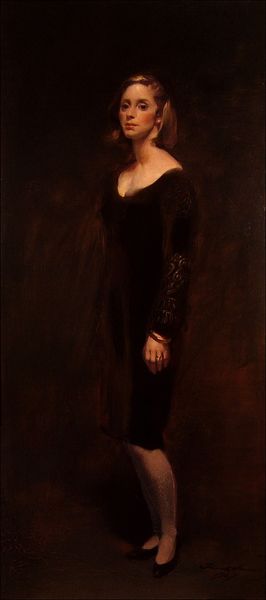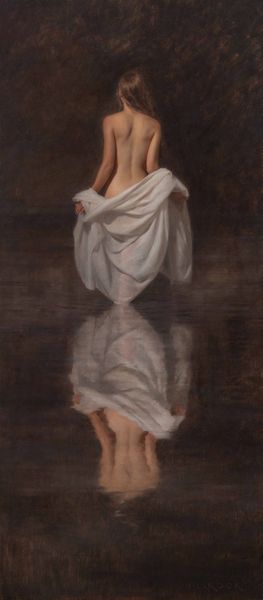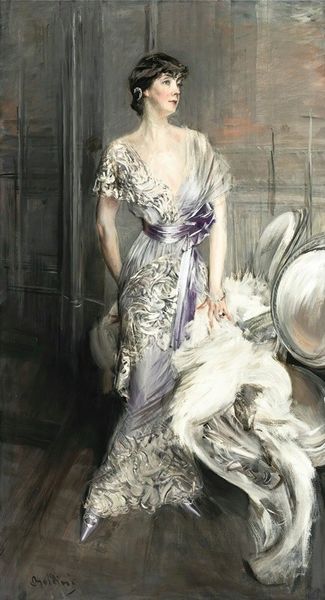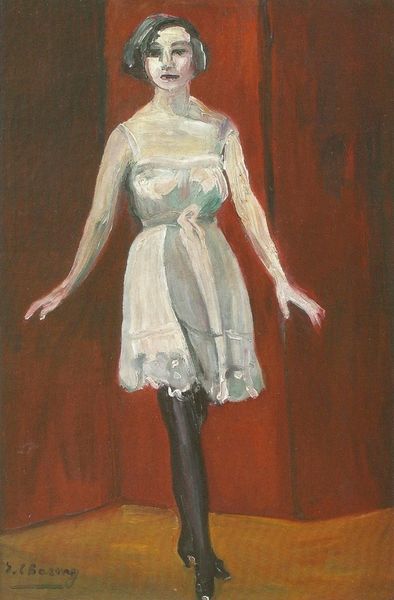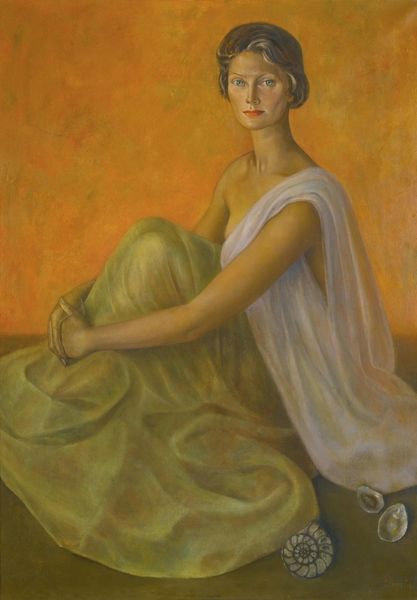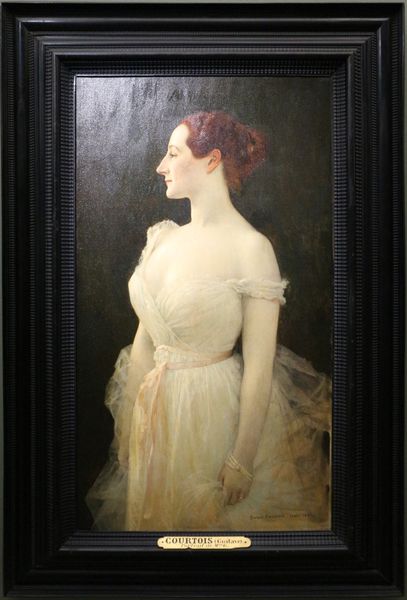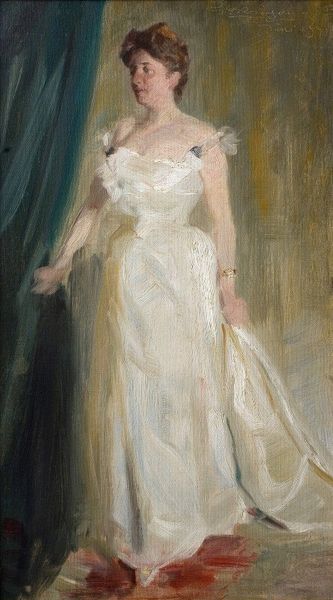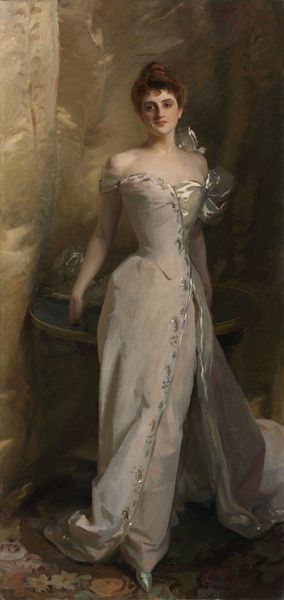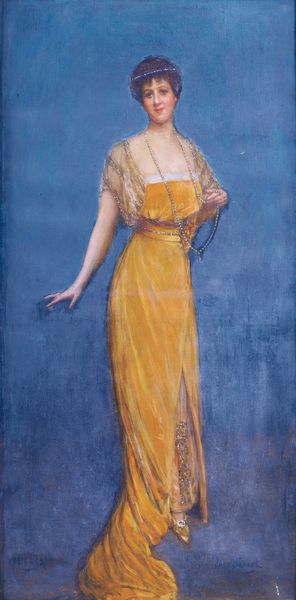
Copyright: Public domain
Curator: Here we have Antonio de La Gandara’s "Portrait of Madame Pierre Gaudreau," painted in 1898. What strikes you first? Editor: It’s the gown. All that shimmering, pale fabric cascading to the floor, it speaks to the sheer labor involved in its creation. Curator: Absolutely. Gandara, working within the tradition of academic portraiture, uses the gown and pose to signify status and elegance, reinforcing Mme. Gaudreau's place in society. Editor: But the question remains, where was this fabric sourced, who spun it, who wove it, who stitched this fabulous garment together? The dress whispers of social strata in a completely different sense. Curator: That’s insightful. Though the Impressionists had begun challenging academic painting by this time, portraits like this still served an important role, legitimizing the bourgeoisie and aristocracy in fin-de-siècle Europe. Editor: Indeed, Gandara's handling of the oil paint mimics the silk's sheen almost perfectly; he captures that luminous quality beautifully. Did he consider the lived reality of the fabricators though? Were those workers ever permitted entrance into these halls? Curator: A compelling point. We know Gandara moved within very elite circles, he portrayed the upper echelons of Parisian society. But his artistic output, including portraits such as this, helped to solidify societal norms. Editor: So it becomes about understanding that relationship: that art doesn't just depict social class; it's materially part of its construction. Curator: Yes, it is. The painting itself—the oil paint, the canvas—represents an investment, a physical manifestation of wealth, mirroring that shimmering silk of the dress. Editor: And how art is complicit in creating what appears like “effortless” beauty. Curator: Thinking about "Portrait of Madame Pierre Gaudreau" this way allows us to question those traditional narratives. Thank you for helping me contextualize the means, and impact, of making, showing, and appreciating artworks such as this. Editor: It highlights how even a seemingly straightforward portrait can reveal intricate layers of production and reception.
Comments
No comments
Be the first to comment and join the conversation on the ultimate creative platform.
